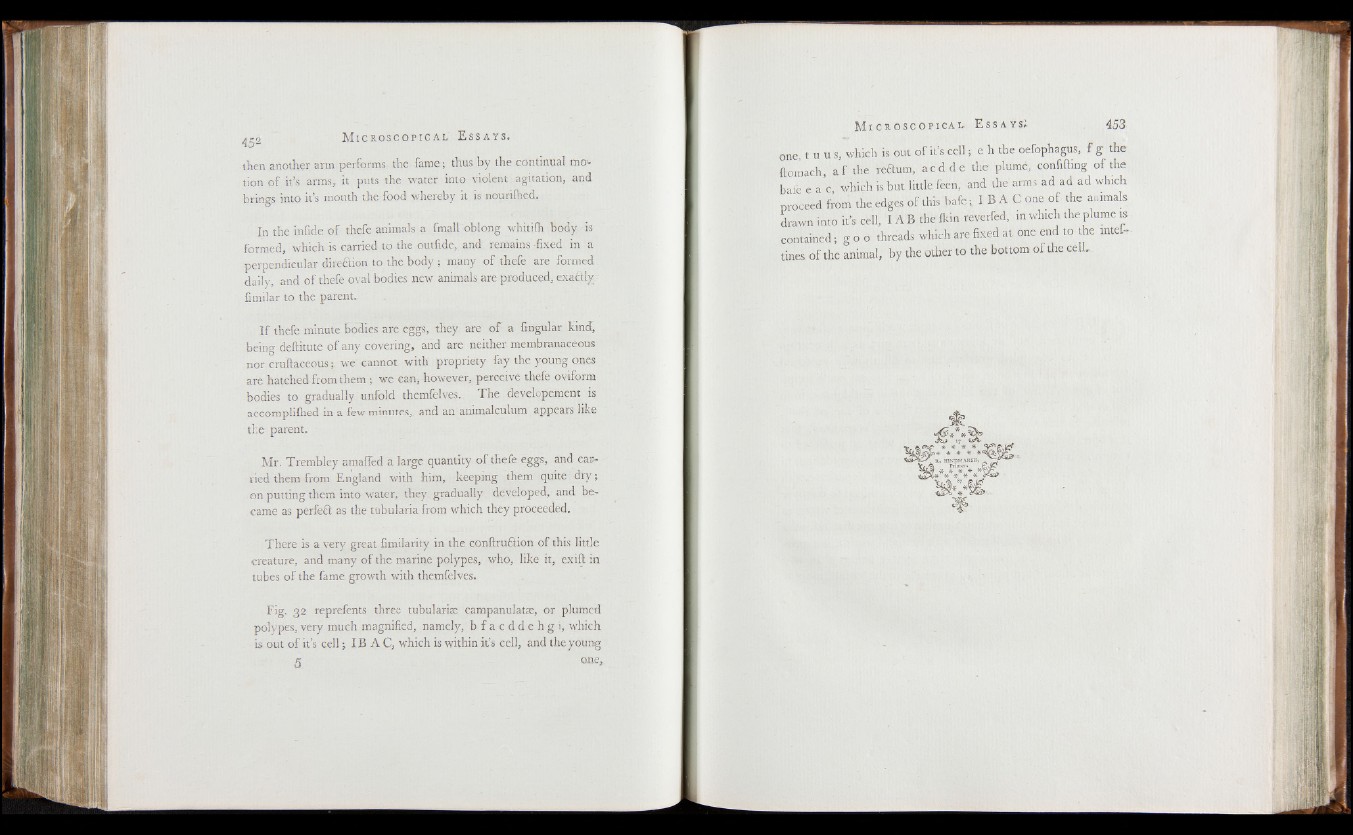
then another arm performs the fame; thus by the continual motion
of it’s arms, it puts the water into violent agitation, and
brings into it’s mouth the food whereby it is nourilhed.
In the inlide o f thefe animals a fmall oblong whitifh body is
formed, which is carried to the outfide, and remains -fixed in a
perpendicular dire&ion to the body ; many o f thefe are formed
daily, and of thefe oval bodies new animals are produced, exactly
fimilar to the parent.
I f thefe minute bodies are eggs, they are o f a lingular kind,
being deftitute o f any covering, and are neither membranaceous
nor cruftaceous; we cannot with propriety fay the young ones
are hatched from them; we can, however, perceive thele oviform
bodies to gradually unfold themfelves. The developement is
accomplilhed in a few minutes, and an animalculum appears like
the parent.
Mr. Trembley amafled a large quantity of thefe eggs, and carried
them from England with him, keeping them quite d ry ;
on putting them into water, they gradually developed, and became
as perfeft as the tubularia from which they proceeded.
There is a very great fimilarity in the conftrufiion o f this little
creature, and many of the marine polypes, who, like it, exift in
tubes o f the fame growth with themfelves.
Fig. 32 reprefents three tubulariae campanulatse, or plumed
polypes, very much magnified, namely, b f a c d d e h g i , which
is out o f it’s c e ll; IB A C, which is within it’s cell, and the youn-g
5 ^
one, t u u s, which is out of it’s ce ll; e h the oefophagus, f g the
ftomach, a f the reaum, a c d d e the plume, confifting of the
bafe e a c which is but little feen, and the arms ad ad ad which
proceed from the edges of this bafe; I B A C one of the animals
drawn into it’s cell, I A B the flan reverfed, in which the plume is
contained ; g o o threads which are fixed at one end to the in te s tines
o f the animal, by the other to the bottom of the cell.